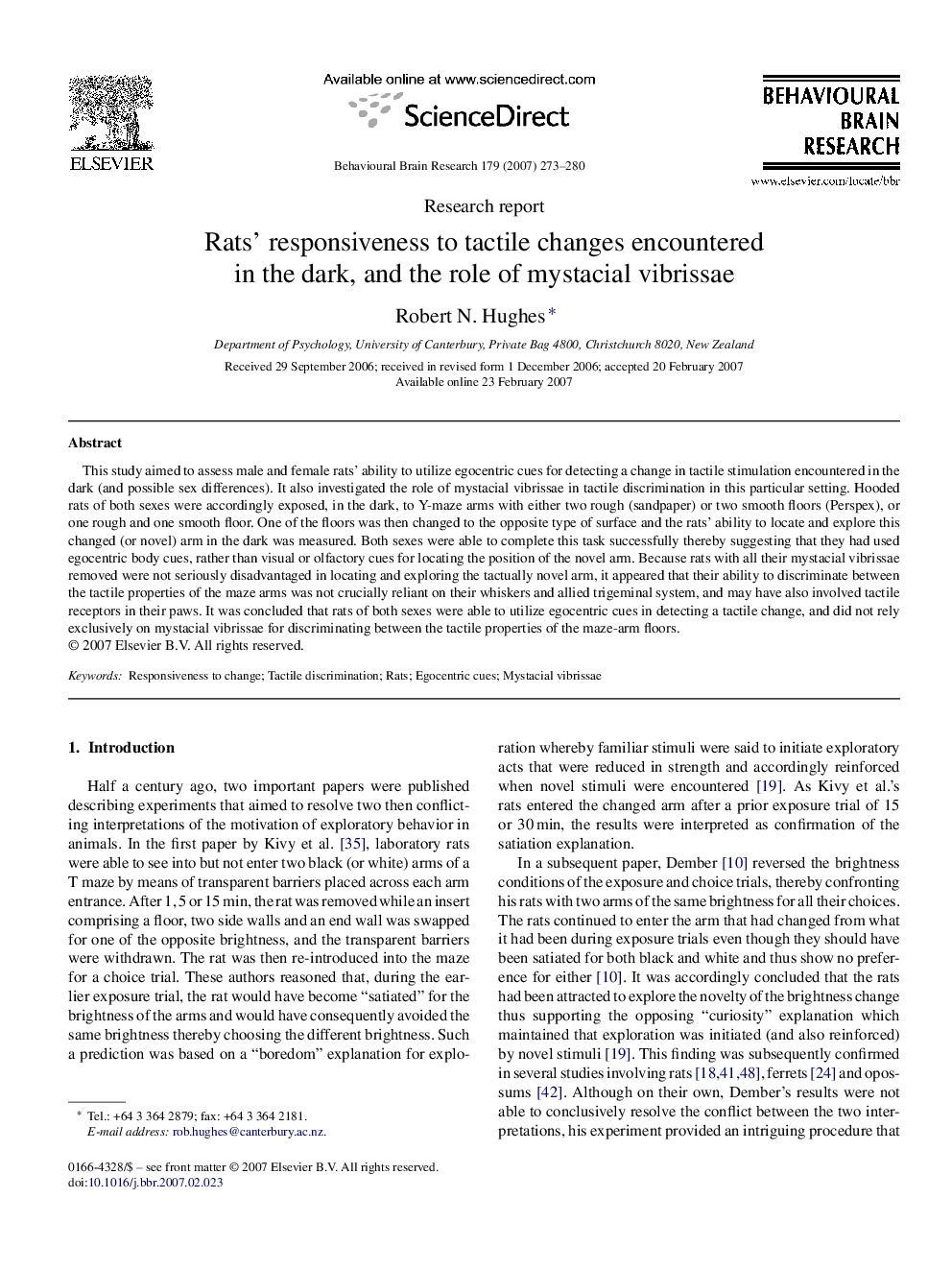| Article ID | Journal | Published Year | Pages | File Type |
|---|---|---|---|---|
| 4315674 | Behavioural Brain Research | 2007 | 8 Pages |
Abstract
This study aimed to assess male and female rats' ability to utilize egocentric cues for detecting a change in tactile stimulation encountered in the dark (and possible sex differences). It also investigated the role of mystacial vibrissae in tactile discrimination in this particular setting. Hooded rats of both sexes were accordingly exposed, in the dark, to Y-maze arms with either two rough (sandpaper) or two smooth floors (Perspex), or one rough and one smooth floor. One of the floors was then changed to the opposite type of surface and the rats' ability to locate and explore this changed (or novel) arm in the dark was measured. Both sexes were able to complete this task successfully thereby suggesting that they had used egocentric body cues, rather than visual or olfactory cues for locating the position of the novel arm. Because rats with all their mystacial vibrissae removed were not seriously disadvantaged in locating and exploring the tactually novel arm, it appeared that their ability to discriminate between the tactile properties of the maze arms was not crucially reliant on their whiskers and allied trigeminal system, and may have also involved tactile receptors in their paws. It was concluded that rats of both sexes were able to utilize egocentric cues in detecting a tactile change, and did not rely exclusively on mystacial vibrissae for discriminating between the tactile properties of the maze-arm floors.
Related Topics
Life Sciences
Neuroscience
Behavioral Neuroscience
Authors
Robert N. Hughes,
